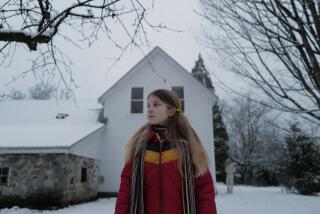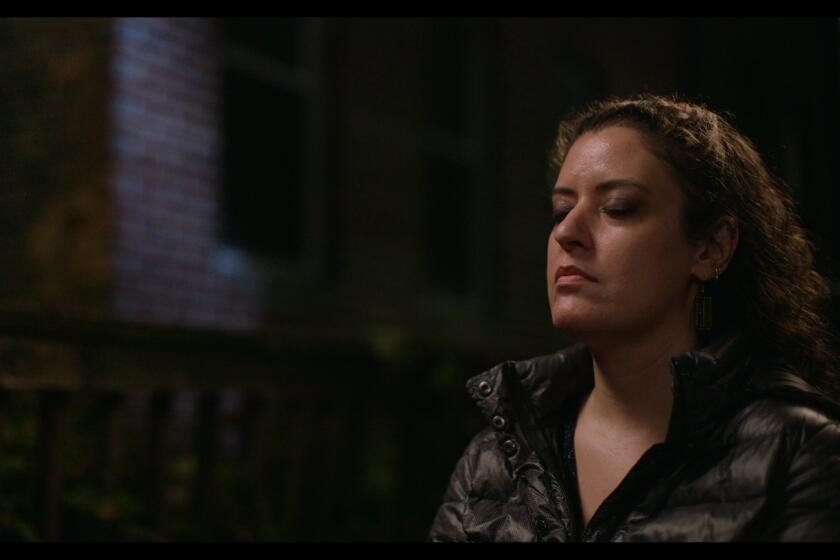‘Green Zone’: An Iraq war movie with a ‘Bourne’ feel
The English estate that director Paul Greengrass took over to make his Iraq war thriller “Green Zone” is hardly humble. The 40,000-square-foot Updown Court mansion outside of London has 103 rooms, a 50-seat cinema and five swimming pools. Listed for some $140 million, the never-occupied property practically asks aloud: Who needs restraint?
Greengrass is making a slightly less immodest -- yet far more provocative -- statement with his new movie: Everybody might say pricey movies about combat in the Middle East are a fool’s errand, but ultimately one of them has to work.
FOR THE RECORD:
“Green Zone”: An article in Saturday’s Calendar section about the Iraq war thriller “Green Zone” said the movie would be released March 16. The release date is March 12. —
The $11-million “Hurt Locker” has proved that a low-budget war story in limited distribution can bring in significant praise and modest receipts. There are few such economies on “Green Zone.” With a budget of $100 million, Matt Damon in a starring role and a wide national release on March 16, it is Hollywood’s biggest bet yet on modern conflict, an ambitious amalgam of political drama and popcorn diversion.
“I don’t accept the proposition that cinema can’t look to Iraq and bring people to it,” Greengrass said in one of the mansion’s many colossal bathrooms during filming nearly two years ago. While he spoke, the film’s art department re-dressed the estate that was doubling for a palace inside Baghdad’s U.S. military-controlled Green Zone.
If there’s any filmmaker who can reverse Hollywood’s history on the subject -- the commercial underachievers include “Stop-Loss,” “Rendition,” “Body of Lies” and “The Hurt Locker,” which for all of its awards has grossed just $12.7 million -- it’s Greengrass.
The former documentarian transformed Ireland’s deadly 1972 civil rights march into the powerful “Bloody Sunday,” and in between his last two kinetic Robert Ludlum blockbusters -- “The Bourne Supremacy” and “The Bourne Ultimatum,” both of which starred Damon -- the British director was able to craft a riveting (and surprisingly successful) drama about an event few filmmakers would dare tackle: the 9/11 attacks in his “United 93.”
An intuitive artist who improvises on the set and shoots miles of film, Greengrass doesn’t follow the usual, linear sequence of moviemaking -- develop a screenplay, film it, edit the footage together -- preferring instead to discover the story through the process itself. The contours of his movies don’t fundamentally change from start to finish, but there are countless journeys down dead ends along the way, and “Green Zone,” which was shot in England, Spain and Morocco, was rushed into production in early 2008 (to finish before a threatened actors strike) with an unfinished script (thanks to an actual screenwriters strike), intensifying the consequences of his method.
While many directors consider extensive re-shoots an admission of failure, to Greengrass they’re as essential as costumes. “You could be halfway through making a dinner of beef stew, and he’ll walk through the door with a chicken and say, ‘Maybe we shouldn’t have beef stew tonight,’ ” said “Green Zone” screenwriter Brian Helgeland (“L.A. Confidential”) in explaining the director’s method. “He plans things out, but he also plans not to stick to his plans.”
Said Damon, who was allowed to improvise within 30-minute action scenes: “His cameras are always responding to what’s happening. They are never predicting what’s happening. As an actor, it’s an absolutely exhilarating experience.”
What might be exhilarating for actors and energizing for screenwriters, though, are the very things that steer studio executives toward antidepressants. While Universal Pictures, which pushed the movie from an awards season slot in the fall to the spring, says it is eager to work with the director again, the studio and Greengrass both say making “Green Zone” was far from easy.
“I have to say,” Greengrass said, “it was a long, hard road.”
When Greengrass six years ago first considered making a movie about the American-led invasion, he wasn’t certain what specifically he wanted to explore. He toyed with a movie about extraordinary rendition -- capturing, interrogating and sometimes torturing terrorism suspects -- before focusing on the hunt for weapons of mass destruction.
“It was a pivotal subject in why we went to war and how the war was sold,” Helgeland said of WMDs.
Greengrass and Helgeland crafted a character loosely based on Chief Warrant Officer Richard Lamont Gonzales (and played by Damon in the film), who in Iraq led a Mobile Exploitation Team charged with finding WMDs. The hunt for the nonexistent weapons gave “Green Zone” its narrative foundation, but it wasn’t until the literate and loquacious Greengrass read Rajiv Chandrasekaran’s “Imperial Life in the Emerald City: Inside Iraq’s Green Zone” that the movie found its thematic shape.
The book focuses on the ruinous decisions made by Paul Bremer and his Coalition Provisional Authority as the United States tried and failed to bring order to Iraq. Greengrass found the book captured perfectly the messy postwar collision of idealism and reality, a central component to the film.
Damon’s Roy Miller is an idealistic Army warrant officer mystified that he never finds WMDs where intelligence reports says they should be. Working with a reluctant local civilian (“United 93’s” Khalid Abdalla), he is quickly drawn into a political duel between a neoconservative government official (Greg Kinnear) and a CIA agent (Brendan Gleeson). As Miller searches for answers instead of WMDs, he runs into a journalist (Amy Ryan) who bears a strong resemblance to Judith Miller, the New York Times reporter whose articles about Iraq’s WMDs proved erroneous.
Greengrass, Helgeland, Damon and Universal were all very intentional about what “Green Zone” was not: a teachable moment bearing an ideological agenda. The goal, Damon said, was to pitch the movie toward “Bourne” fans “and see how much of that audience would come to see a movie with a similar aesthetic and similar action -- but with a story set in the real world.”
That edict consequently meant that as the movie came together, its makers concentrated on action-driven intrigue rather than dialogue-heavy exposition (even the signage on the film’s set called the production “Green Zone Thriller” rather than “Green Zone”). Because Damon had to leave to do to “The Informant!” earlier than Greengrass wished (there were also some complications in filming “Green Zone” at night), much of the film’s third act had to be reshot months later at a cost of multiple millions of dollars.
“We never had a third act that felt like it fit the movie,” Damon said of the film’s original ending. “It kind of petered out.” Said Helgeland: “We could never make up our mind on who lived and who died and who should kill whom.”
The film’s new conclusion feels much more like a “Bourne” film: energetic action, helicopters, gunfire, explosions. “The mission statement going into this film was always to make a broad film with commercial appeal,” said Donna Langley, Universal’s co-chairman, “a propulsive, paranoid conspiracy thriller.”
Back at Updown Court, Greengrass said that too was his goal, even as he discussed the subject matter’s liabilities.
“Will it work? Who knows?” he said. “I am a born optimist. . . . Nobody is insulated from the pressure. But in the end, if you can craft a compelling story with a clearly defined central character and the biggest possible stakes, then you have a chance.”
More to Read
Only good movies
Get the Indie Focus newsletter, Mark Olsen's weekly guide to the world of cinema.
You may occasionally receive promotional content from the Los Angeles Times.








